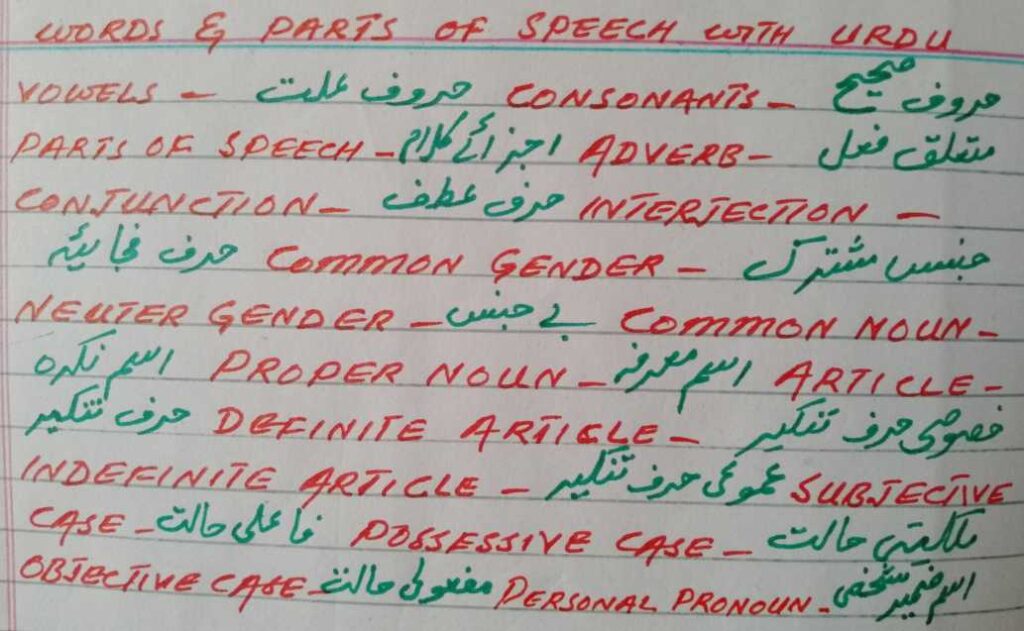
The English Language is considered the modern lingua franca of the world. It is widely used in international trade, politics, education, and culture. Broadly, English can be categorised into:
- Colloquial English. Everyday language used in conversation by educated people.
- Slang English. Informal expressions, often short-lived, are usually unsuitable for formal contexts.
- Literary English. The refined language used by authors in creative and academic writing.
Complements in the English Language
A complement is a word or group of words that completes the meaning of a sentence. Complements do not include the verb itself, but they give the sentence its full sense.
Example: I want to go to the park.
Kinds of Complements
- Subjective Complement. Describes the subject.
Example: She is a manager. - Objective Complement. Describes the object.
Example: She made him nervous. - Verb Complement. Describes the verb.
Example: She wants a drink. - Noun Complement. Describes the noun.
Example: She hopes to see Mike soon. - Adjective Complement. Describes an adjective.
Example: She is good at her studies. - Predicate Complement. Similar to a subjective complement, usually following a linking verb.
Example: The house looks empty.
For more examples on sentence structures, read our post Speak English Fluently: Practical Tips to Improve Confidence & Skills.

The Contraction “Ain’t” in the English Language
Ain’t is an informal contraction of am not, is not, are not, has not, or have not.
- It is widely criticised for being non-standard, but it appears in songs, direct speech, show titles, and fictional dialogue.
- In formal writing, it is best avoided, except as a deliberate stylistic choice.
- Example phrase: You ain’t seen anything yet.
Over time, informal contractions like ain’t have shown how English adapts to culture, music, and pop media. Such transformations reveal that language is not static but continuously evolving, a key reason English remains globally dominant.
Similes in the English Language
A simile is a figure of speech that compares two different things using like or as.
- The sea roared like a lion.
- The seawater tasted like tears.
- Mike was as excited as a puppy.
The word simile comes from Latin, meaning “similar.” Writers use similes to make language vivid and expressive.
Literal vs Metaphorical Meanings in the English Language
Words often carry both literal and metaphorical meanings:
- She touched the pianist on the hand. (literal)
- Her song touched the audience. (metaphorical = moved emotionally)
Another example:
- She moved the book. (literal)
- The sad ending moved her deeply. (metaphorical = caused emotions).
Understanding both meanings helps enrich vocabulary and interpretation.
The Canterbury Tales: Geoffrey Chaucer’s Masterpiece for readers interested in figurative meaning in classic literature

What is a Fable in the English Language?
A fable is a short story with a moral or a lesson. Fables often use animals or simple characters to teach values and wisdom.
- Example: The Tortoise and the Hare.
For moral lessons in real life, read Jack Ma: The Founder of Alibaba Group and the Jack Ma Foundation.
The Partitive Genitive in the English Language
The partitive genitive expresses quantity for uncountable nouns, usually with “of.”
Examples:
- A piece of advice
- A slice of bread
- A blade of grass
- A jar of honey
- A game of cricket
Native speakers use these naturally; mastering them improves fluency.
Why Learning These Concepts Matters

Mastering different aspects of the English Language, such as complements, similes, contractions like ain’t, and figurative expressions, goes far beyond memorising grammar rules. These elements give depth, style, and clarity to everyday communication.
For example, knowing how to use subject complements or object complements makes writing more precise. Recognising the difference between literal and metaphorical meanings allows readers to enjoy literature and poetry with a deeper understanding. Even informal forms, such as ain’t highlight how the English Language evolves and adapts to cultural trends.
Similes and fables add creativity and imagination. A simple simile like “as bright as the sun” makes an idea vivid and easy to remember. Likewise, fables have been used for centuries to teach values and lessons in a way that resonates with both children and adults.
Another often-overlooked detail is the partitive genitive, which helps learners sound more natural. Everyday phrases such as “a slice of bread” or “a piece of advice” may appear simple, yet they reflect how the English Language shapes meaning in practical communication.
In short, these concepts enrich vocabulary, improve fluency, and make the English Language not only a tool for communication but also a medium for creativity and cultural expression. By practising them regularly, learners can gain confidence and bring their spoken and written English closer to mastery.
✏️ Explore more English Grammar tips and lessons in our English Grammar section

